Amazing images of rivers most people have never heard of
Wonderful waterways
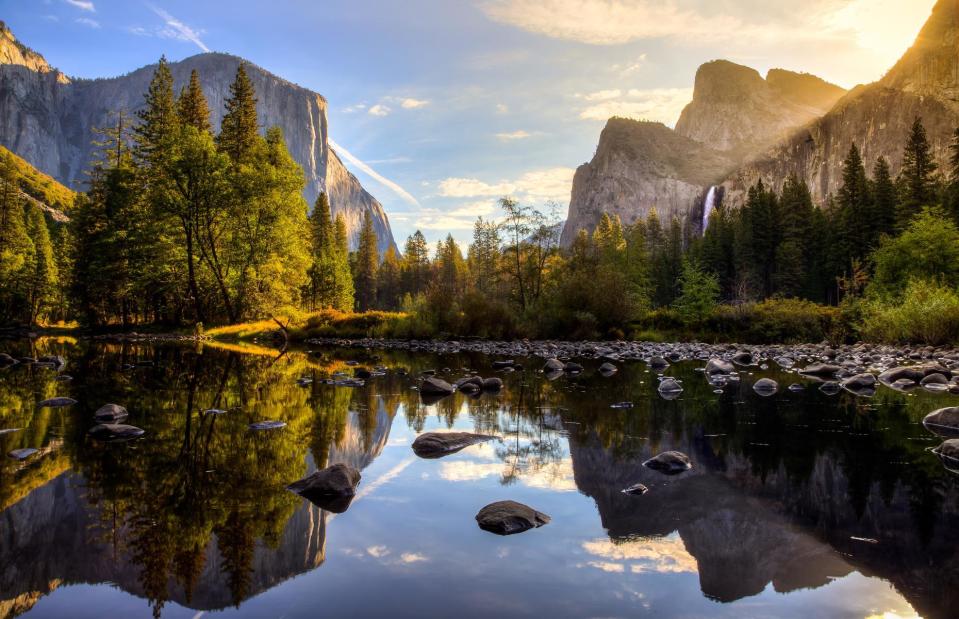
Stephen Moehle/Shutterstock
From gushing glacial torrents and raging mountain rivers to trickling tributaries meandering through pretty countryside, we take a look at some ravishing but little-known rivers around the world.
Click through the gallery for stunning photos of the world's rivers you might not have known existed...
Crooked River, Oregon, USA
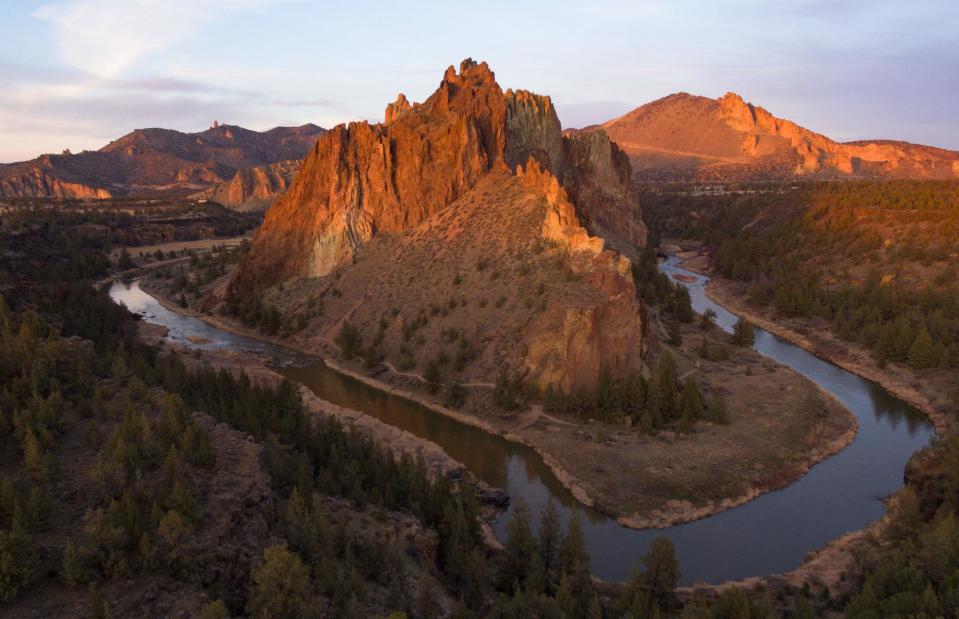
Christopher Boswell/Shutterstock
With its rugged beauty, cascades and healthy fish population, this wild river – a tributary of the Deschutes River – in central Oregon attracts hikers, rafters and fishermen to its powerful waters. One of the best ways to admire its spectacular geologic formations and waterfalls is on two wheels by following its course on the Crooked River Canyon Scenic Bikeway. The spectacular Crooked River Canyon is also popular with rock climbers.
River Itchen, Hampshire, England, UK
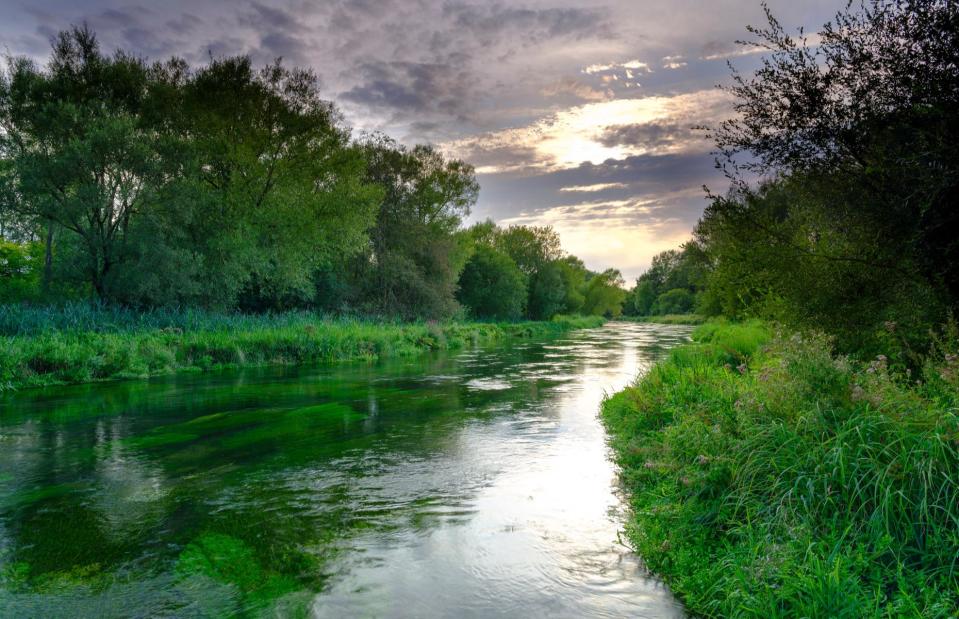
Julian Gazzard/Shutterstock
The improbably pretty River Itchen is straight out of the pages of children's book The Wind and Willows. Stroll along its bucolic banks keeping an eye out for Ratty as you go – water voles are one of the protected species that live here. You’re also likely to spot dragonflies dancing above the surface and fat trout gliding through the crystal-clear waters. The beautiful chalk 'stream' flows from mid-Hampshire to Southampton and has been designated as a Site of Special Scientific Interest and it’s also home to otters and white-clawed crayfish.
Serrano River, Patagonia, Chile
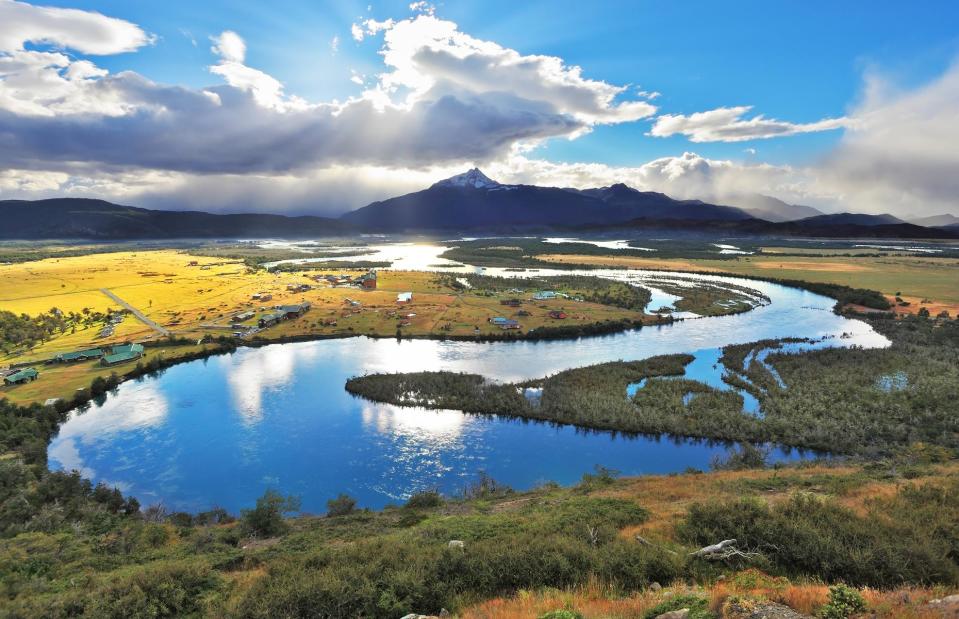
xxx.kavram/Shutterstock
Towering peaks, azure lakes, ancient forests, vast glaciers and rushing rivers – the wild beauty of Patagonia's landscape is extraordinary. And the Serrano River flows past some of its most spectacular scenery until it reaches the Seno Ultima Esperanza. The river is popular with kayakers and fly fishers with some pretty waterfalls along its course. But be sure to take a boat out into the inlet to see the startlingly beautiful Serrano glacier, looking out for sea lions en route.
Soca River, Slovenia
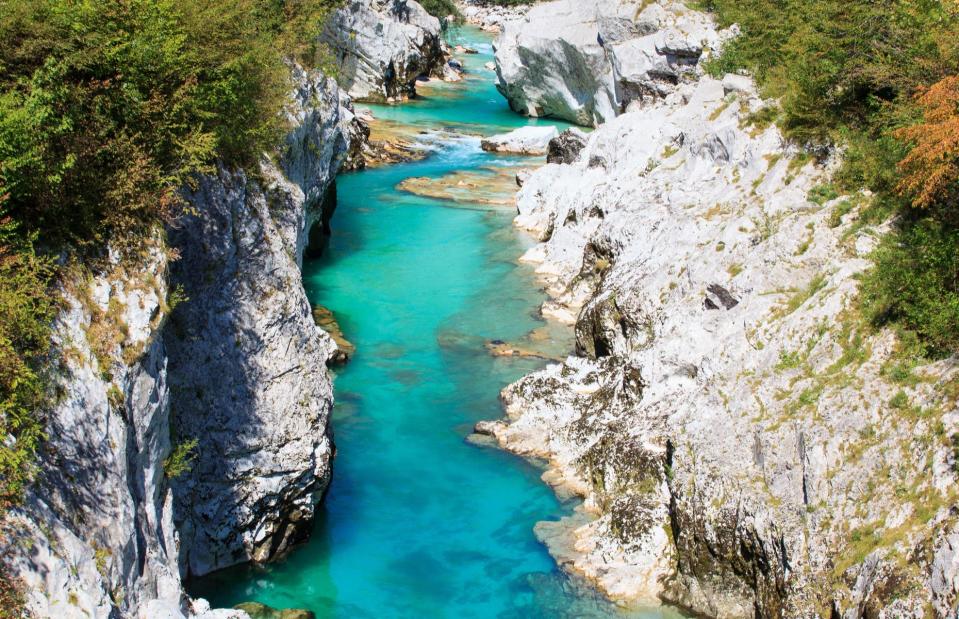
bepsy/Shutterstock
Surrounded by the gorgeous Julian Alps and with a striking aquamarine colour, the Soca River is an absolute beauty. The fast-flowing river attracts outdoor adventurers looking to conquer its cascades and waterfalls on rafts and kayaks. While hikers follow the Soca Trail from its source to the town of Bovec, avid fishermen try to snare its highly-prized Soca trout.
Tara River, Montenegro
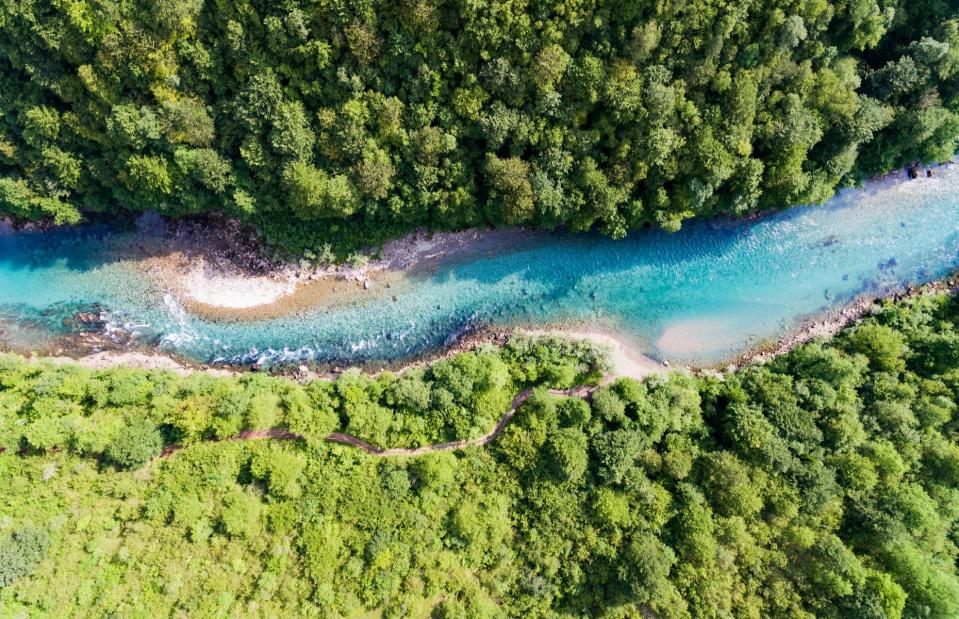
novak.elcic/Shutterstock
Starting in the Komovi mountains near the Albanian border, the Tara River wends its way through some of the country’s most dramatic mountainous scenery. In Durmitor National Park, the waterway creates Europe’s deepest and longest canyon. Nicknamed the 'Grand Canyon of Europe', it's 4,300 feet (1,300m) deep at its peak and a brilliant spot for white-water rafting. The Tara, the longest river in Montenegro, goes on to meet the Piva River near the Bosnia and Herzegovina border to become the Drina River.
River Lealt, Isle of Skye, Scotland, UK
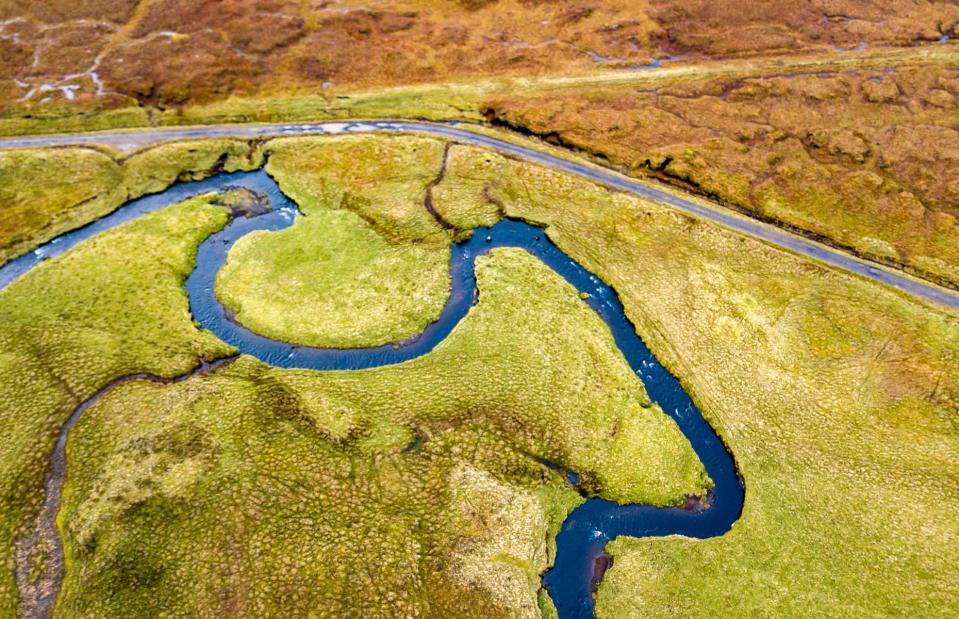
Lukassek/Shutterstock
One of the Isle of Skye’s many scenic rivers, the Lealt meanders through the island’s northeast, passing some of its most beautiful scenery. As with many of Skye’s rivers, it’s possible to fish for salmon and sea trout in its clear waters. But the main reason most people visit the river is to see its waters tumble dramatically down into the gorge at the spectacular Lealt waterfall.
Neretva River, Bosnia and Herzegovina
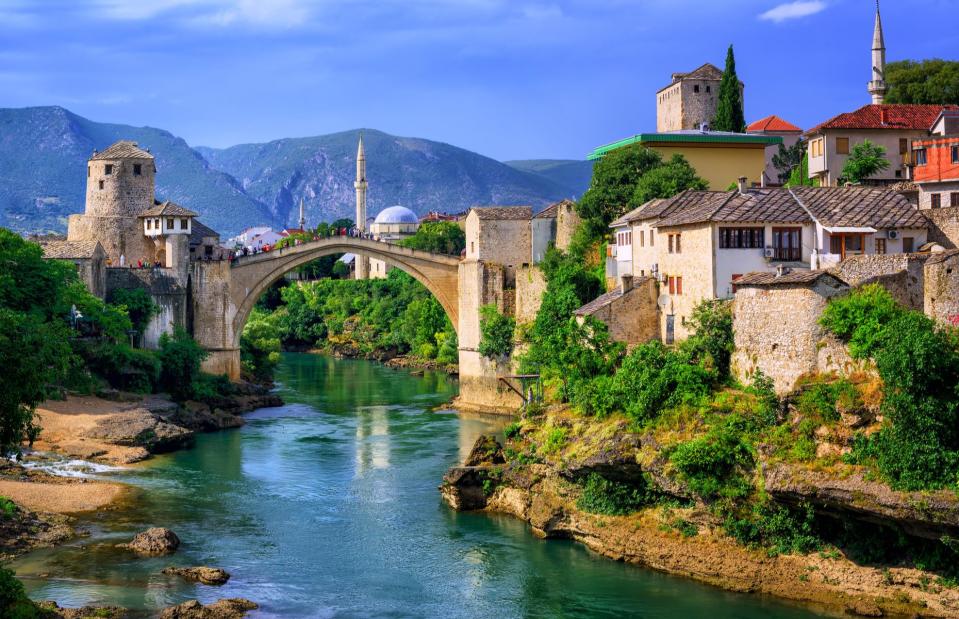
Boris Stroujko/Shutterstock
Rising at the foot of the Zelengora Mountains, the Neretva River flows 140 miles (225km) through Bosnia and Herzegovina and into Croatia. Its upper reaches are characterised by spectacular canyons and deep gorges. It carries on to meander through the beautiful historic Ottoman town of Mostar in the country's south. Here the pretty waterway is crossed by the famous Stari Most (old bridge), which gave the town its name. The Neretva finally flows into Croatia and out into the Adriatic, creating an incredible swampland at its delta.
Hunter River, Western Australia, Australia
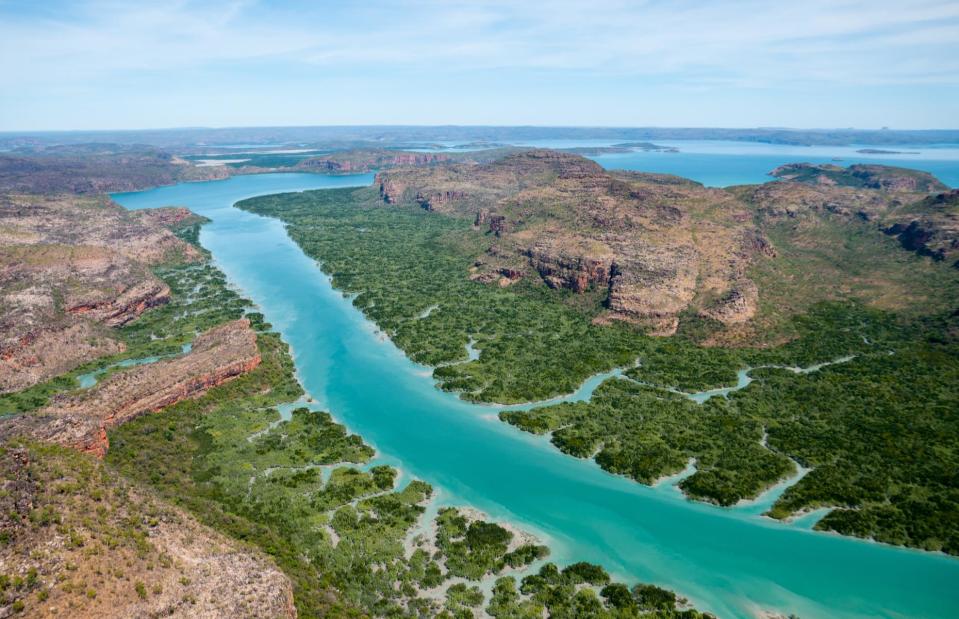
Graeme Snow/Shutterstock
With its red sandstone cliffs, dense mangroves and blazing blue waters, the Hunter River region is renowned for its wild beauty. But the spectacular river system off Western Australia’s remote Kimberley coast has a deadly side too. The wetlands have the highest proportion of saltwater crocodiles of any other river in the area. High-end small cruise ships charter the waters, taking passengers to see the striking rock formation at the river’s mouth and its waterfalls, as they spot the stealth-like salties.
Kenai River, Alaska, USA
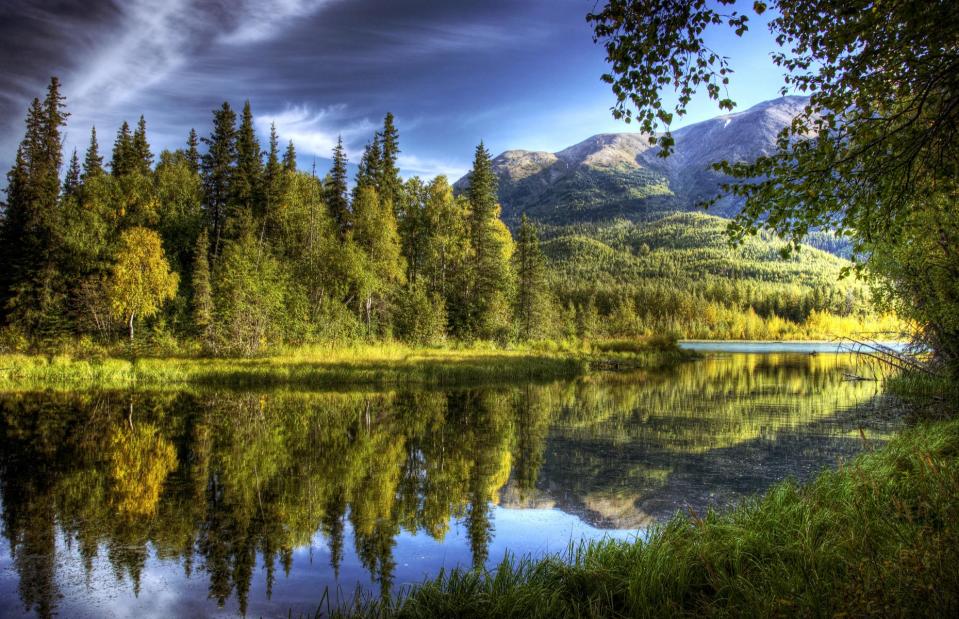
M. Cornelius/Shutterstock
Stunning scenery, white-water rapids and wildlife abound on the Kenai River, which surges from the Chugach Mountains to the Cook Inlet near the town of Kenai. Take a boat trip through the Kenai National Wildlife Refuge to glide through majestic mountainous landscapes, watching for moose, bears, beavers and salmon as you go. The Kenai has one of the greatest salmon runs of southern Alaska too – its waters are home to four species of salmon including sockeye and king salmon.
Guadalquivir, Andalusia, Spain
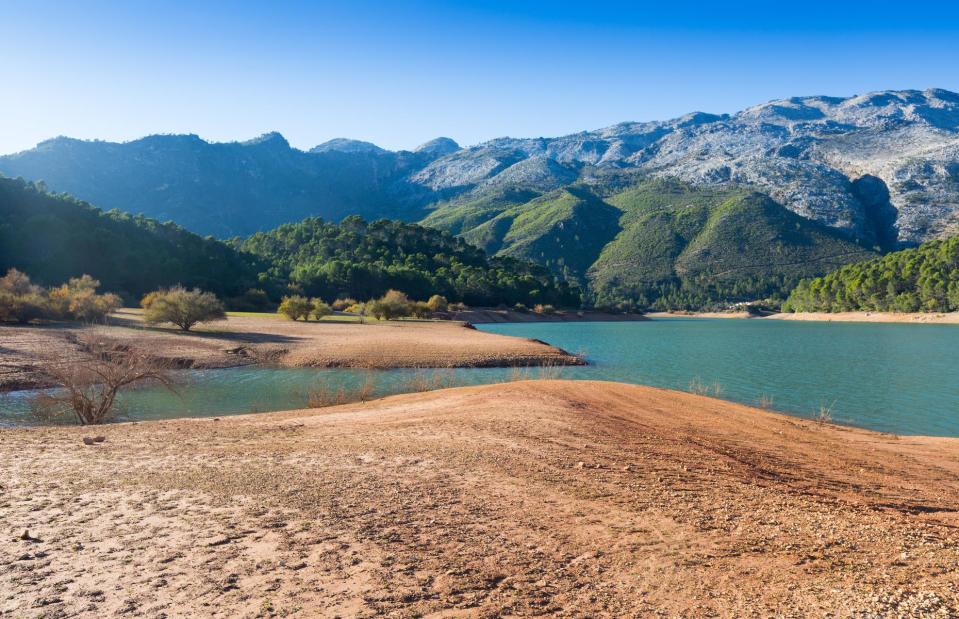
Iakov Filimonov/Shutterstock
Coursing through Andalusia's undulating mountains, past historic cities and out to the Atlantic Ocean, the Guadalquivir river is the second longest and the only navigable river in Spain. It begins its 408-mile (657km) stretch in the eastern Cazorla mountain range and ends at the port of Cadiz on the west coast. It's been an important route to numerous civilisations, dating back to the Phoenicians. Today, the Guadalquivir is one of Europe’s hidden gems of river cruising, taking passengers past some of the region’s most gorgeous natural assets and historic sights.
Green River, Washington, USA
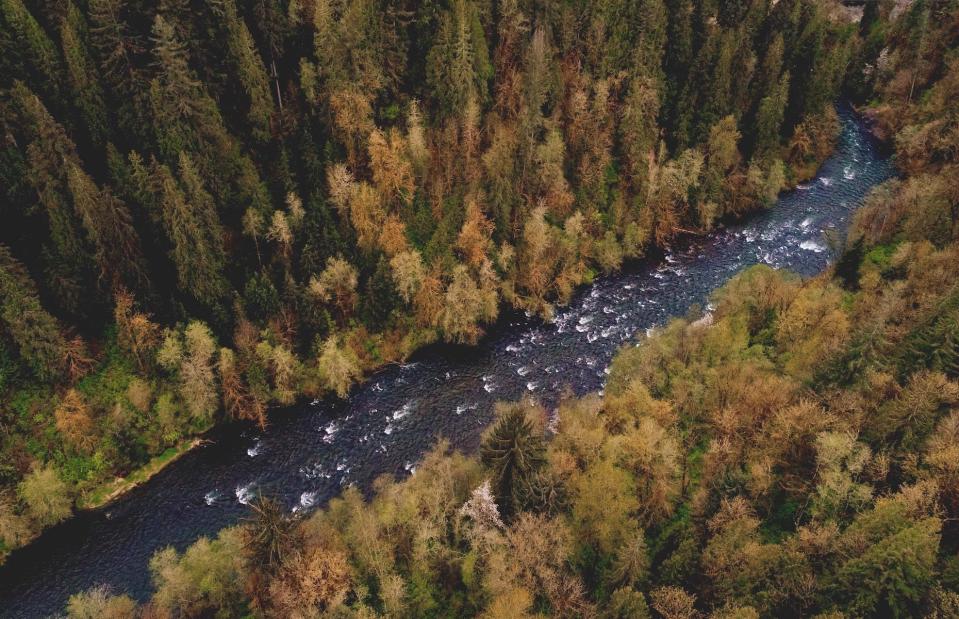
Jason Schuller/Unsplash
The Green River flows west out of the Cascade Range through the state of Washington for 65 miles (105km) down to Elliott Bay in Seattle, turning into the Duwamish River at Tukwila. Its upper section goes through thick forest, once home to logging towns. Today parts of the river are popular spots for tubing in the warmer months and, when the conditions are right, white-water rafting expeditions, which set off from the Flaming Geyser State Park.
Clutha Mata-au River, Otago, New Zealand
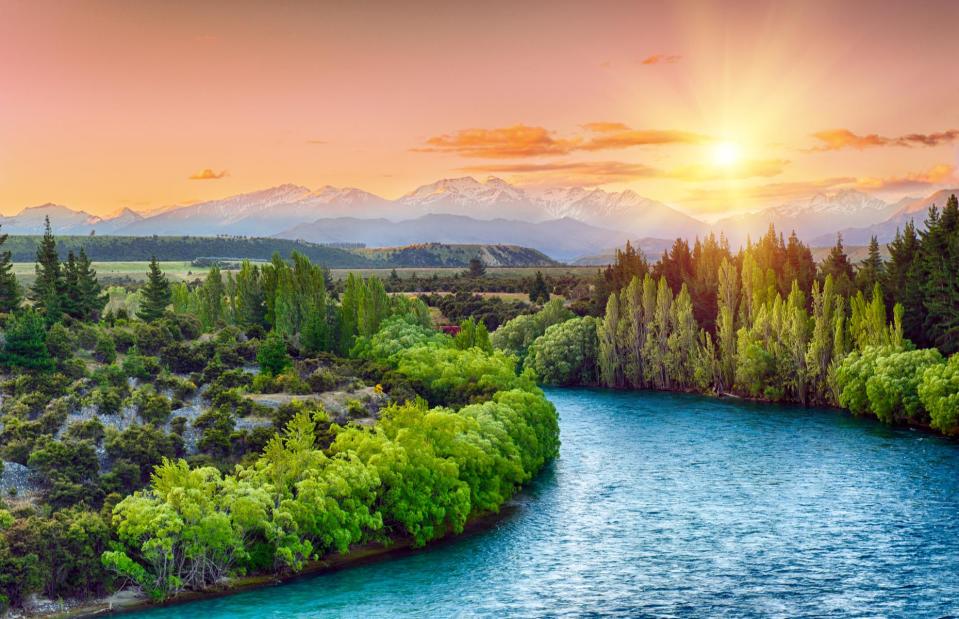
Filip Fuxa/Shutterstock
Surging through scenic central Otago, this fast-flowing artery is the longest river on New Zealand’s South Island and the second longest in the country after the Waikato River. Various walking and cycle tracks follow the Clutha Mata-au's path and cruises traverse its mighty waters, taking passengers past historic gold mining settlements and on to the remote and ravishing Roxburgh Gorge.
Glaslyn River, Gwynedd, Wales, UK
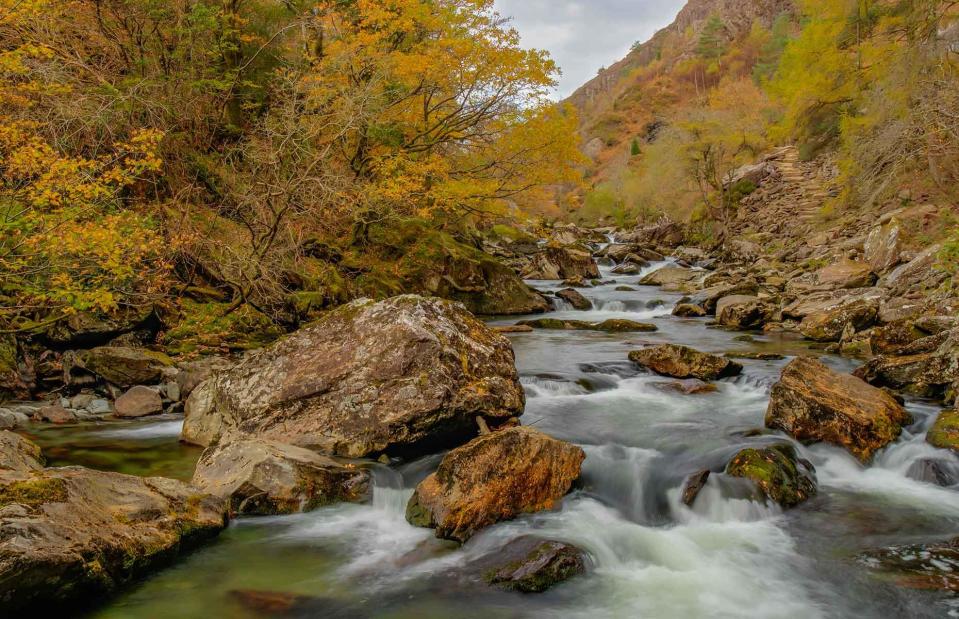
Itay Kapla/Shutterstock
The source of this Snowdonian tributary has mystical routes – according to local folklore the Glaslyn Lake is where Bedivere threw King Arthur's sword Excalibur into the water and where the king's body was later carried away to Avalon. The scenery is certainly magical where the stream flows from Lake Glaslyn on the western slopes of Mount Snowdon before charging down towards the sea at Porthmadog. One of the most spectacular sections of river can be seen at the Aberglaslyn Pass, pictured.
Gauja River, Latvia
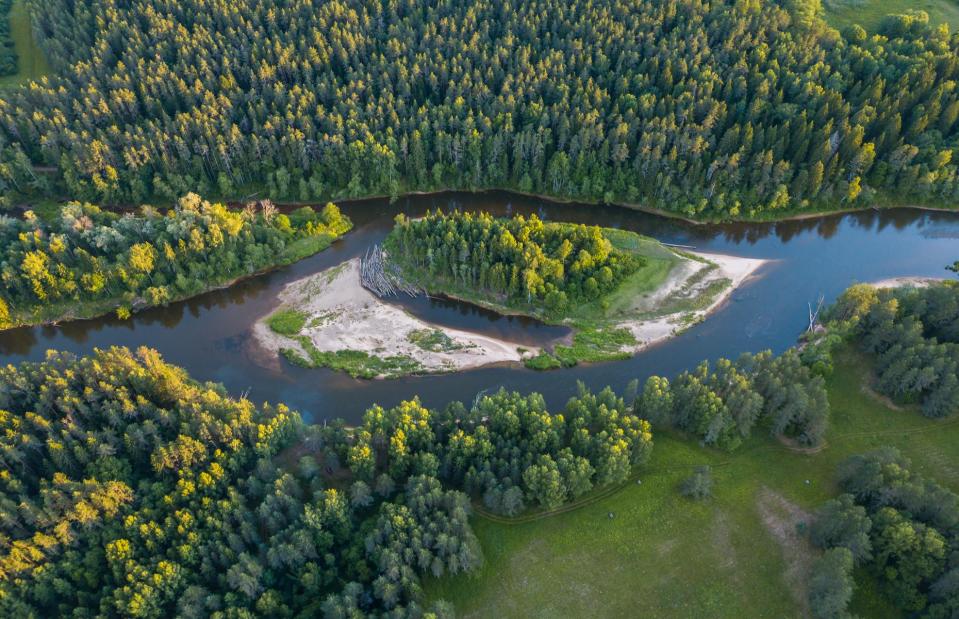
Aleks Kend/Shutterstock
The only river that begins and ends in Latvia, the Gauja is a popular place for boating, swimming and hiking in the country's daylight-filled summers. A large stretch of the pretty river flows through the thickly forested Gauja National Park, which is named after the waterway and is Latvia’s largest national park.
Arda River, Bulgaria
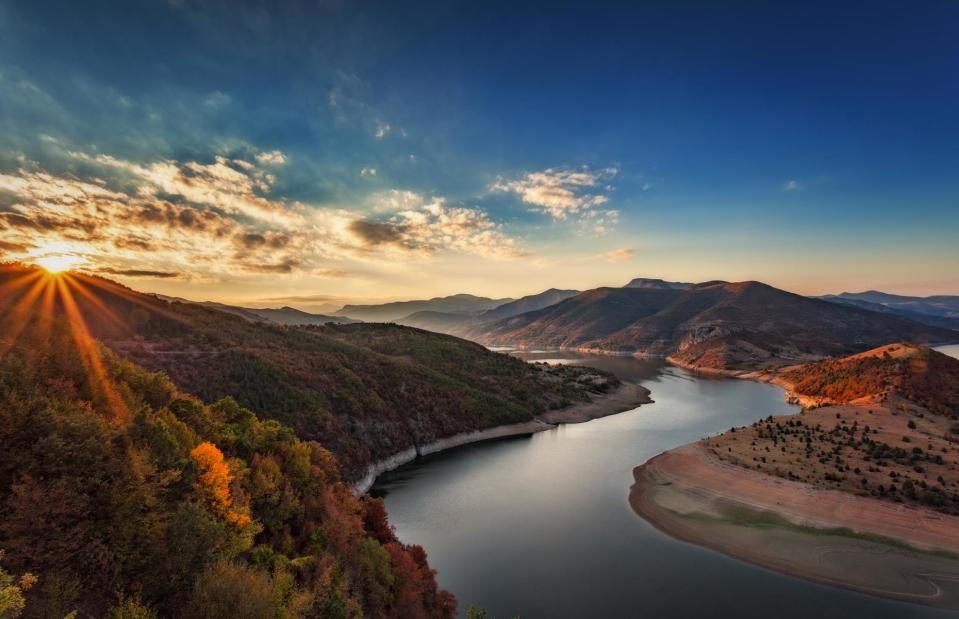
Petar Bogdanov/Shutterstock
Snaking through southeast Bulgaria’s pretty Rhodopes mountains, the Arda River is one of the region's bountiful natural assets. With its beguiling peaks, striking rock formations, lush valleys and traditional villages, the mountainous region is popular with hikers and cyclists in summer and skiers in winter, when the coursing river often turns to ice. One of the Arda’s most famous sights is the old stone bridge, known as Devil's Bridge, which spans the water near Ardino.
Blyde River, South Africa
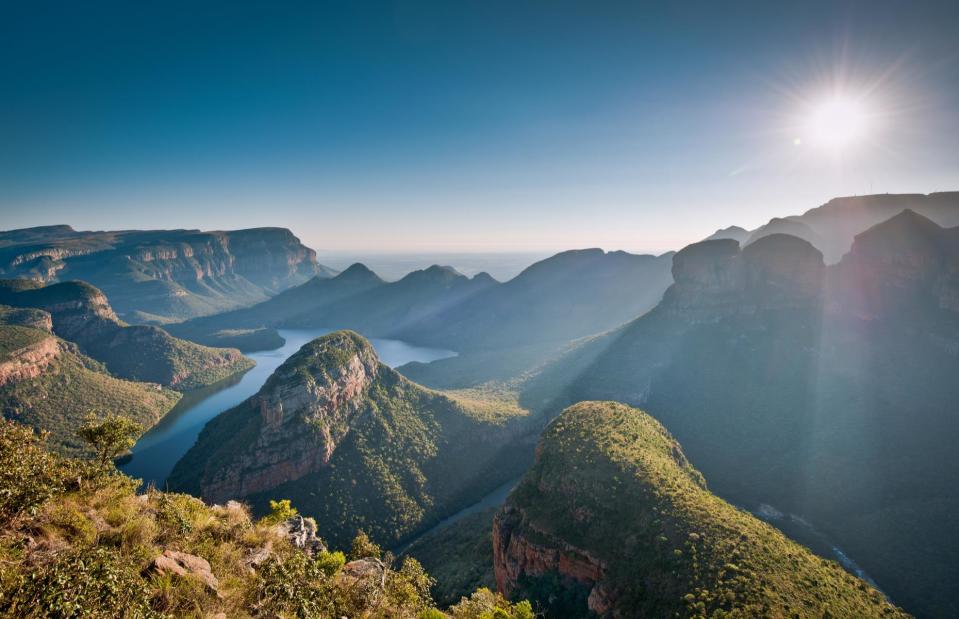
Mark Dumbleton/Shutterstock
Carved out by the mighty Blyde River, its namesake canyon is one of South Africa’s most amazing natural wonders and one of the world’s largest canyons. The gaping chasm follows the Blyde River as it cuts its way through the dramatic Drakensberg escarpment and plummets over 3,280 feet (1,000m) to the Lowveld below. Strange cylindrical sculptures, known as ‘Bourke’s Luck Potholes’, mark the start of the canyon and are where the Blyde meets the Treur River.
Fish River, Namibia
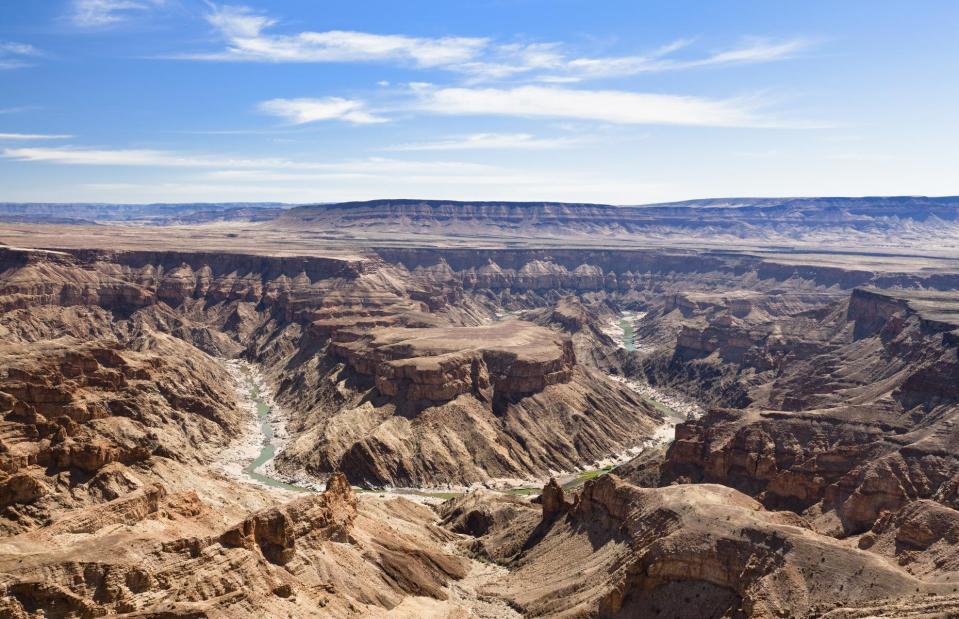
Tilo G/Shutterstock
Another of Africa's spectacular canyons can be found along the course of Fish River, the longest interior river in Namibia. This dramatic gorge cuts through the Great Namaqualand plateau and is the second largest canyon in the world after the Grand Canyon. It was formed by the Fish River, which flows around 375 miles (604km) from the Naukluft Mountains in central Namibia until it joins the Orange River on the southern border. The intermittent river can dry up in the hot season.
Bow River, Alberta, Canada
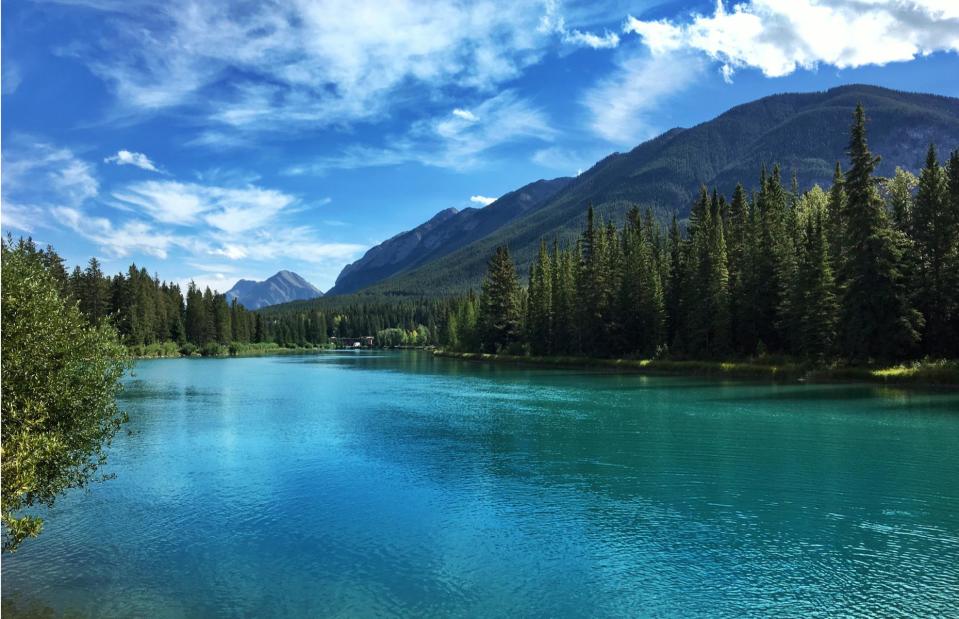
Jake Moxon/Shutterstock
With its source in the awe-inspiring Rocky Mountains, the scenic river flows 365 miles (587km) south through the province of Alberta. Beginning in the glacial Bow Lake in Banff National Park, it flows on through cowboy capital Calgary and the rolling prairies to join the Oldman River. Here, the two rivers form the South Saskatchewan River, which eventually flows into Hudson's Bay. The river is so called because the Cree First Nations people used to make bows from the Douglas firs that grow along its banks.
River Krka, Croatia
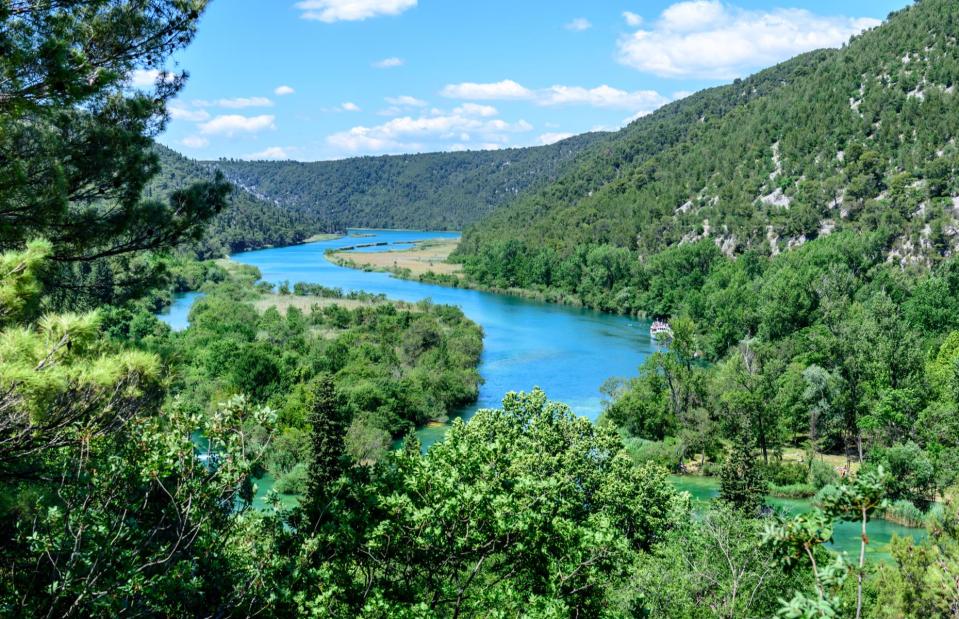
epic_images/Shutterstock
Forget Croatia’s Dalmatian coast and head to the banks of this beautiful waterway instead. The River Krka flows for 45 miles (72km) into the Dalmatia region from its source near the Bosnia and Herzegovina border. It’s known for its series of dreamy waterfalls. Two thirds of the river lies within Krka National Park, where you can take a boat trip to explore the water and its main sights, including the small island of Visovac, home to Franciscan monks since the 15th century. Or simply wade in.
Miranda River, Brazil
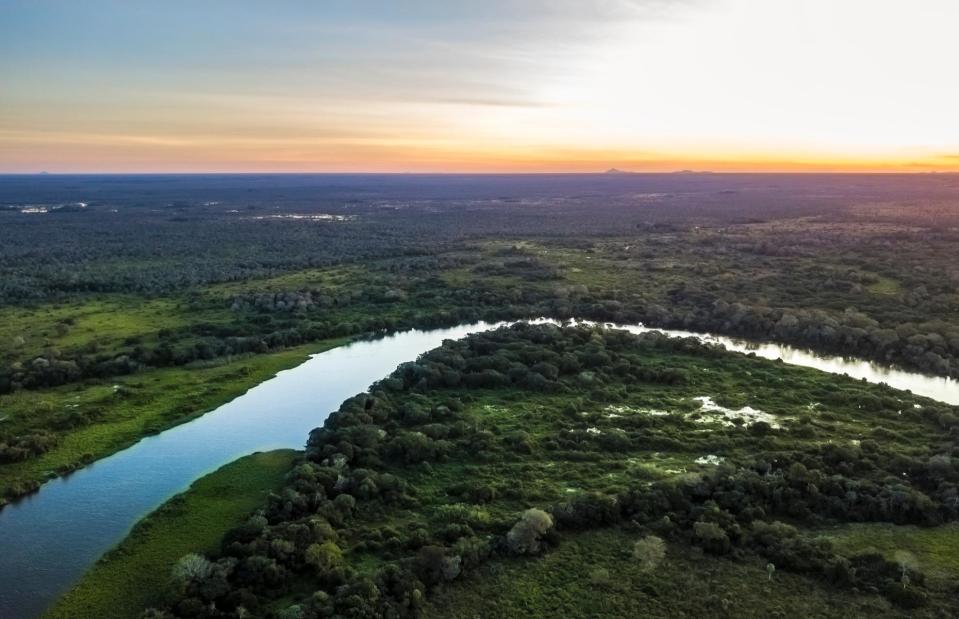
Leonardo Mercon/Shutterstock
Home to caiman (an alligator-like reptile), giant river otters, piranha, giant catfish and myriad other species, the Miranda River – a tributary of the Paraguay River – flows through the world's largest tropical wetland area. The Pantanal, 70,000 square miles (181,299sq km) of biodiverse wilderness, is located mostly within the Brazilian state of Mato Grosso do Sul, but also extends into Bolivia and Paraguay. The extraordinary wetlands are prime jaguar spotting territory too.
Provo River, Utah, USA
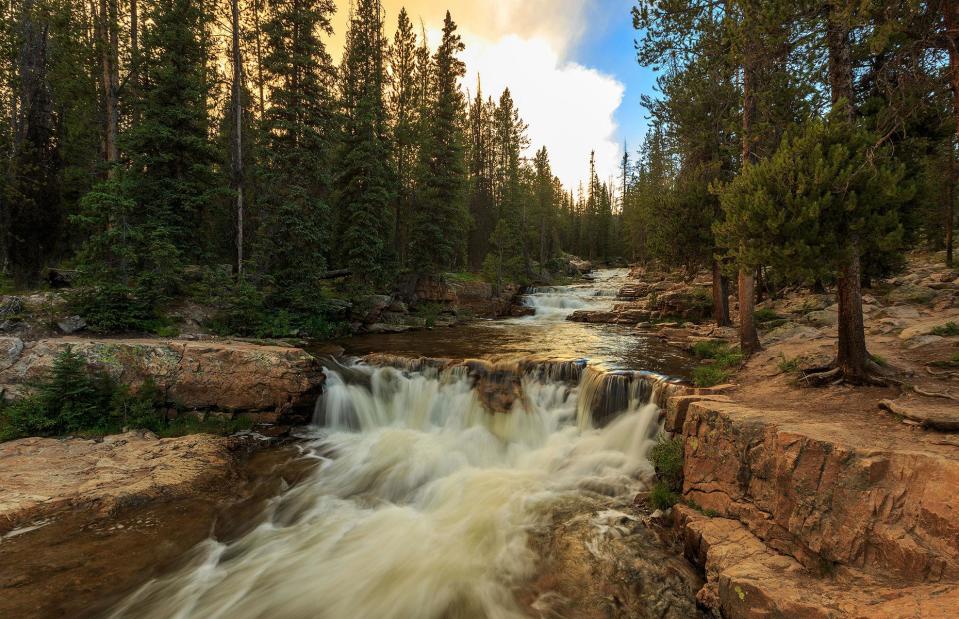
Johnny Adolphson/Shutterstock
The Provo River is formed of the North Fork Provo River and the South Fork Provo River. The two branches are split into upper, middle and lower sections and the river is affectionately called 'Utah's home water'. It's said to have some of the best trout fishing in the state.
Li River, China
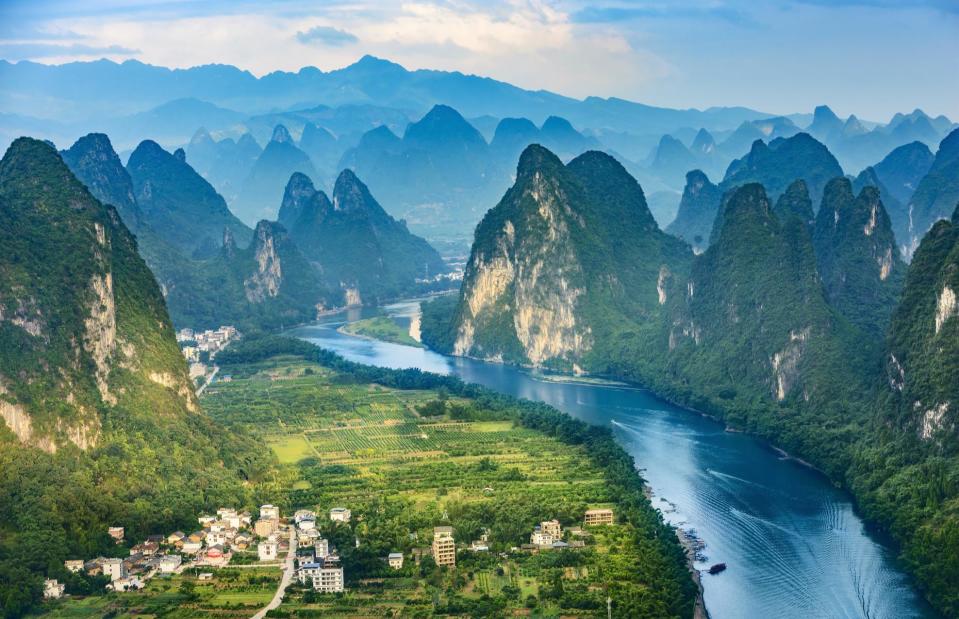
Aphotostory/Shutterstock
Astonishing scenery from all angles is guaranteed on a cruise along the dreamy Li River, especially on the super-scenic stretch from pretty Guilin to Yangshuo. The river, in south China’s Guangxi Province, snakes past towering karst mountains, lush fields and ancient villages. You’re likely to see water buffalo wading in the water and local fishermen floating by on bamboo rafts. Some still practice the ancient tradition of fishing with cormorant birds.
Periyar River, Kerala, India
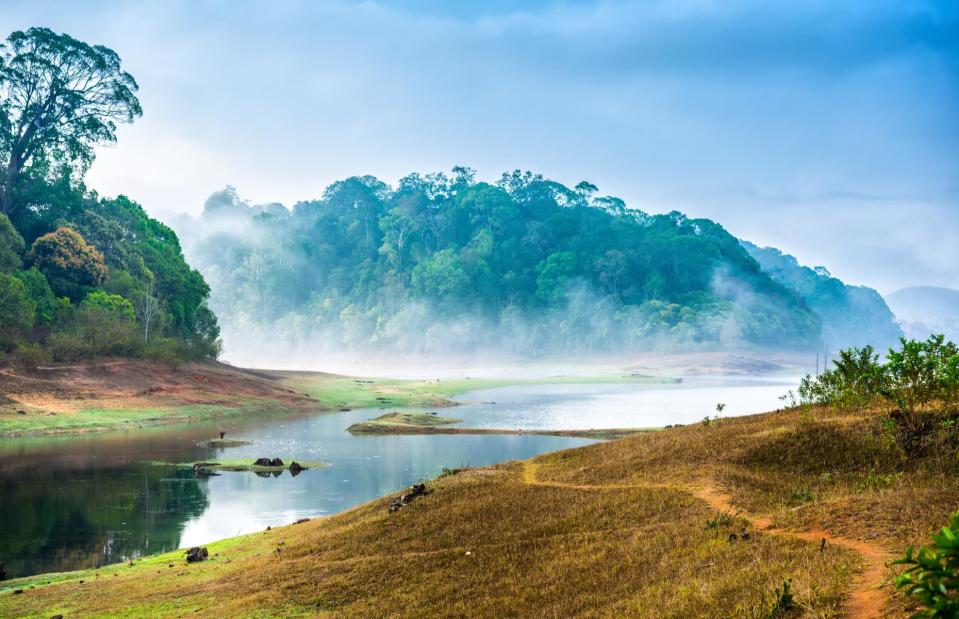
Ailisa/Shutterstock
Rising in the Sivagiri hills of the Western Ghats, this vital river is the longest in the lush state of Kerala, flowing for 140 miles (225km). It goes into the Periyar National Park, where it was dammed to make the Periyar Lake, then continues its course to the Arabian Sea just north of Kochi. It’s known as the lifeline of Kerala as it provides the region with drinking and agricultural water, supports a fishing industry and is an important source of hydroelectricity. It's also stunningly beautiful.
River Jokulsa a Fjollum, Iceland
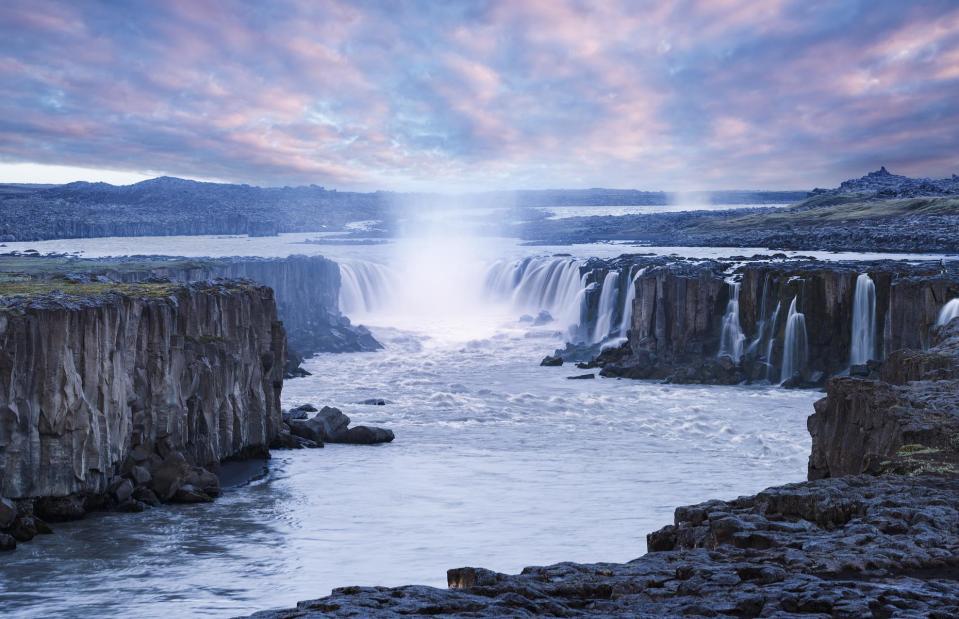
Kotenko Oleksandr/Shutterstock
Surging through the northeast of Iceland, the Jokulsa a Fjollum is a glacial river whose roaring waters create some of the country’s most thunderous falls. Formed by Europe’s largest glacier, Vatnajokull, it runs for 128 miles (206km) until it meets the Greenland Sea. The icy-cold waterway flows through one of biggest canyons in Iceland, the startling Jokulsargljufur canyon. It has a series of waterfalls, including the horseshoe-shaped Selfoss waterfall, and surreal rock formations.
Rapa River, Laponia, Sweden
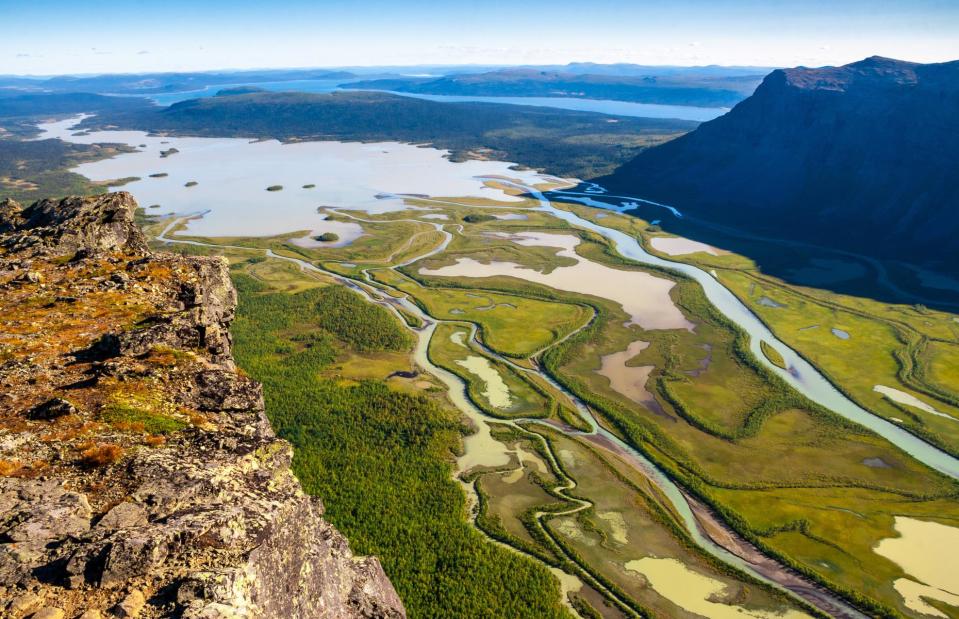
Thomas Bresenhuber/Shutterstock
The tangle of the Rapa River Delta amid the mountains, glaciers and deep valleys is an extraordinary sight. The stunning alpine delta in the remote Sarek National Park is fed by meltwater from glaciers that flow into the Rapa River. The raging river flows through the equally extraordinary Laponia, a vast UNESCO World Heritage region in northern Sweden that is the largest protected natural area in Europe, inhabited by the Sami people since prehistoric times.
La Malbaie River, Quebec, Canada
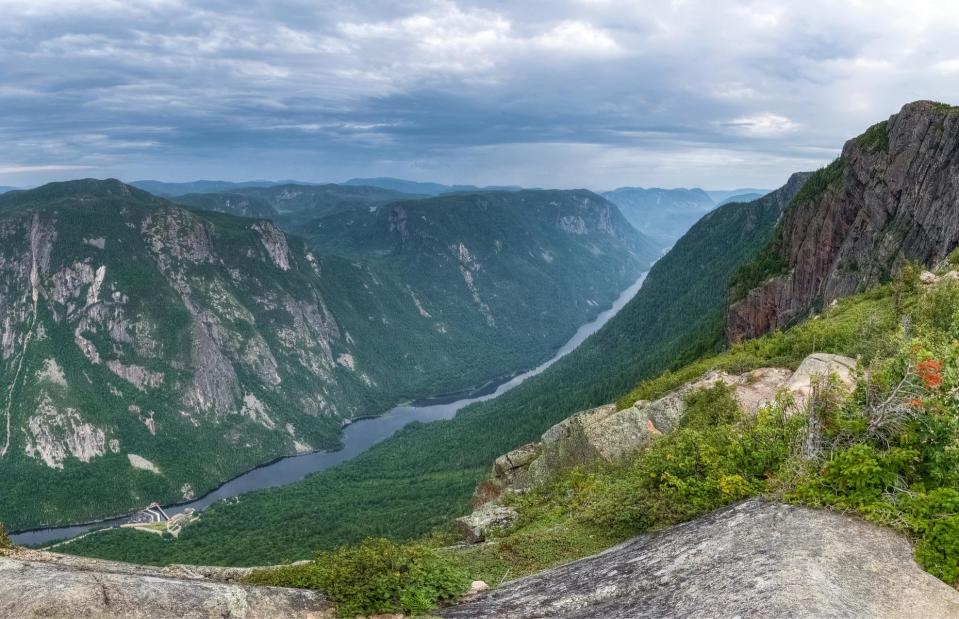
David Boutin/Shutterstock
One of many beautiful natural assets in Quebec's Charlevoix region, La Malbaie winds a southeasterly course through glorious glacial valleys from its source, the Malbaie Lake, high in the Laurentian Massif. Part of the river lies within the Parc des Hautes-Gorges-de-la-Riviere-Malbaie, included in the Charlevoix Biosphere Reserve. Here it's possible to kayak, stand-up paddleboard and take a riverboat cruise on its waters. Osprey, the great blue heron and beavers are likely sightings.
Zanskar River, Jammu and Kashmir, India
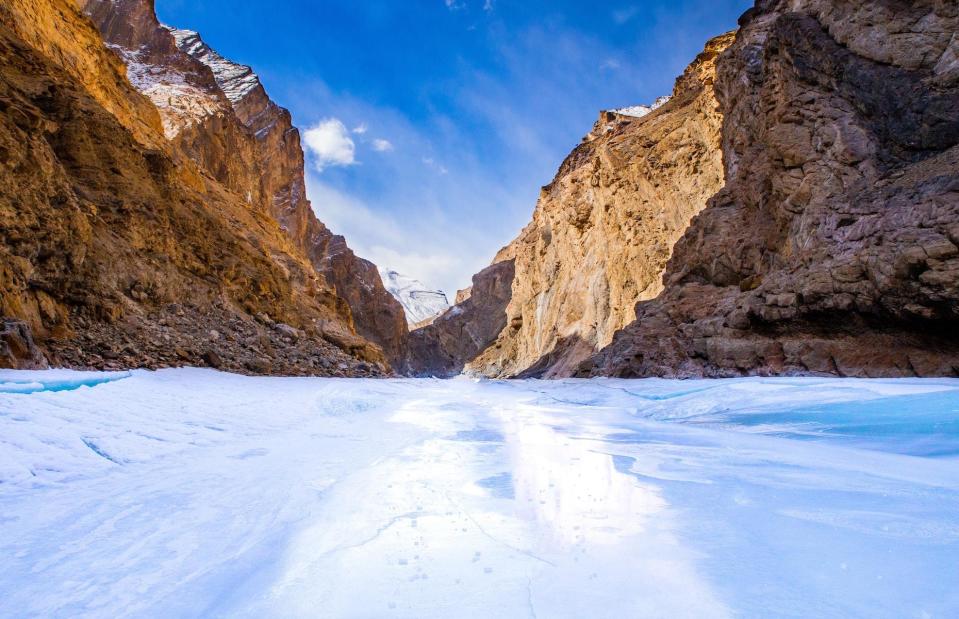
Nitin Gupta/Unsplash
A tributary of the Indus, this powerful waterway is a lifeline for India’s remote Zanskar valley in more ways than one. For centuries it has been used as a pathway between Ladakh and Zanskar from January until March when the extreme temperatures make the valley totally inaccessible except along its frozen upper layers. The arduous route, known as the Chadar hike, is 40 miles (64km) long and now attracts adventurers to tackle it. Little caves along the edge of the river canyon are used as shelters.
Merced River, California, USA
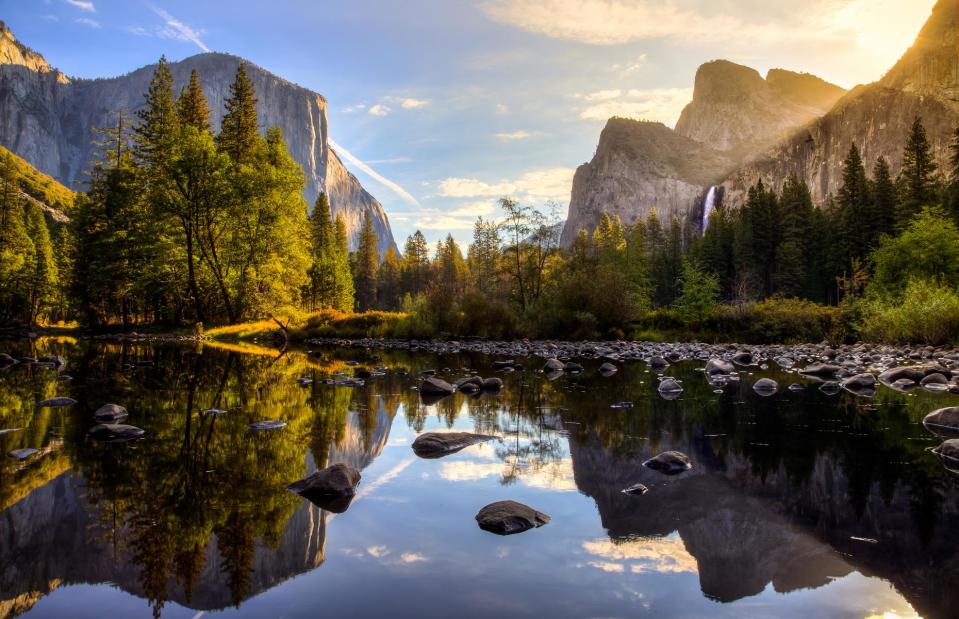
Stephen Moehle/Shutterstock
A 145-mile-long (233km) tributary of the San Joaquin River, the Merced flows from the Sierra Nevada into the San Joaquin Valley. As the main waterway in Yosemite National Park, a trip along its waters promises scenic sights and squeals aplenty as it flows past alpine meadows, pine forests and into the steep-sided Merced River Canyon, where the rapids are a hit with rafters. It’s also possible to go gold-panning along some parts of the river, although not in Yosemite.
Upper Delaware River, New York, USA
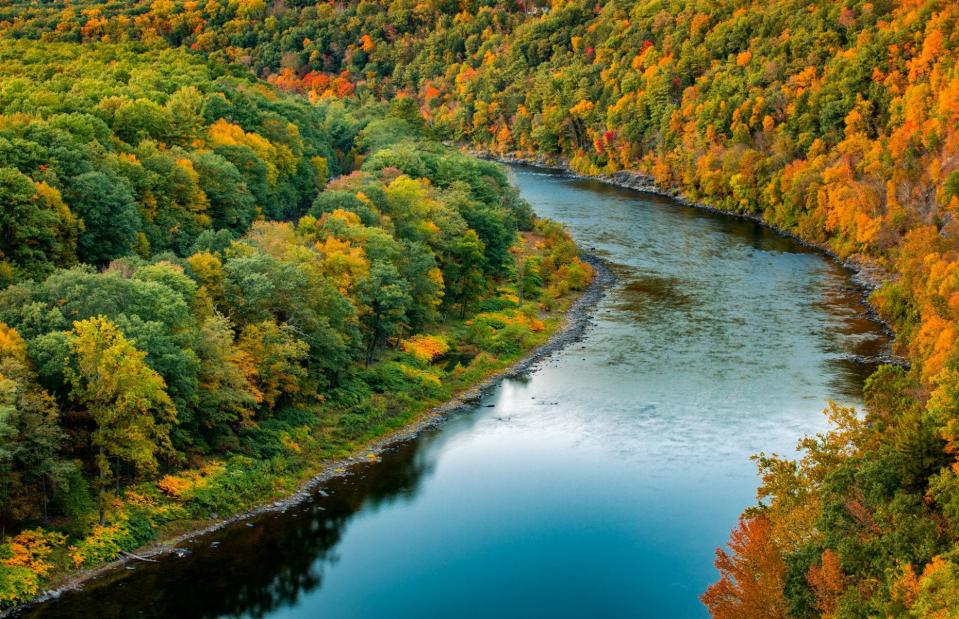
mandritoiu/Shutterstock
The Upper Delaware River flows between the Pocono mountains in Pennsylvania and the shale beds in the Catskills. It then winds its way through the rural countryside along the Pennsylvania/New York border before reaching the Shawangunk mountains. America’s native bald eagles can often be spotted flying overhead as small riverside villages appear between the rolling hills. The beautiful river is popular with canoeists in the summer while there are lots of snowshoeing routes in winter.
The Smith River, Montana, USA
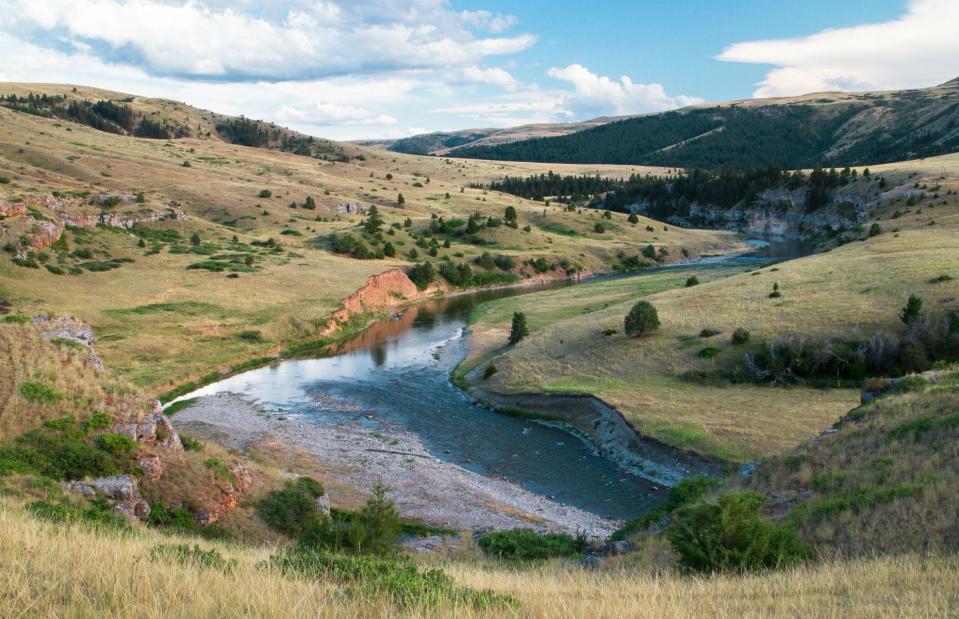
Kevin Wells Photography/Shutterstock
One of Montana’s most celebrated fly-fishing rivers, the Smith – a tributary of the Missouri – flows north out of the Big Belt, Little Belt and Castle Mountains through some of the state’s most incredible scenery. Towering limestone cliffs overhang the rushing waters in the Smith River State Park. Access is heavily restricted in the scenic 60-mile (97km) stretch from Camp Baker to Eden Bridge, with permits only given out after an annual lottery.
Gordon River, Tasmania, Australia
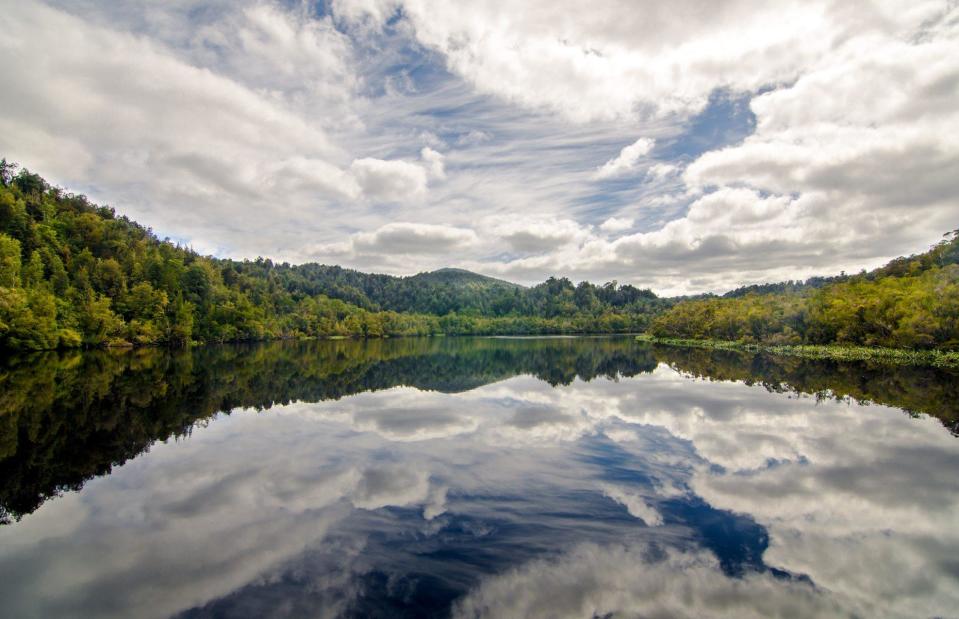
Himadri Chakraborty/Shutterstock
With its rugged mountains, craggy gorges, thick forests and gushing rivers, the southwest corner of Tasmania is a glorious patch of wilderness. A wonderful way to explore this remote area is on a cruise along the Gordon River from Strahan on the west coast into the Franklin-Gordon Wild Rivers National Park, part of a UNESCO World Heritage area. The river will take you through untouched temperate rainforest and past the island state’s oldest convict ruins on Sarah Island.
Orkhon River, Mongolia
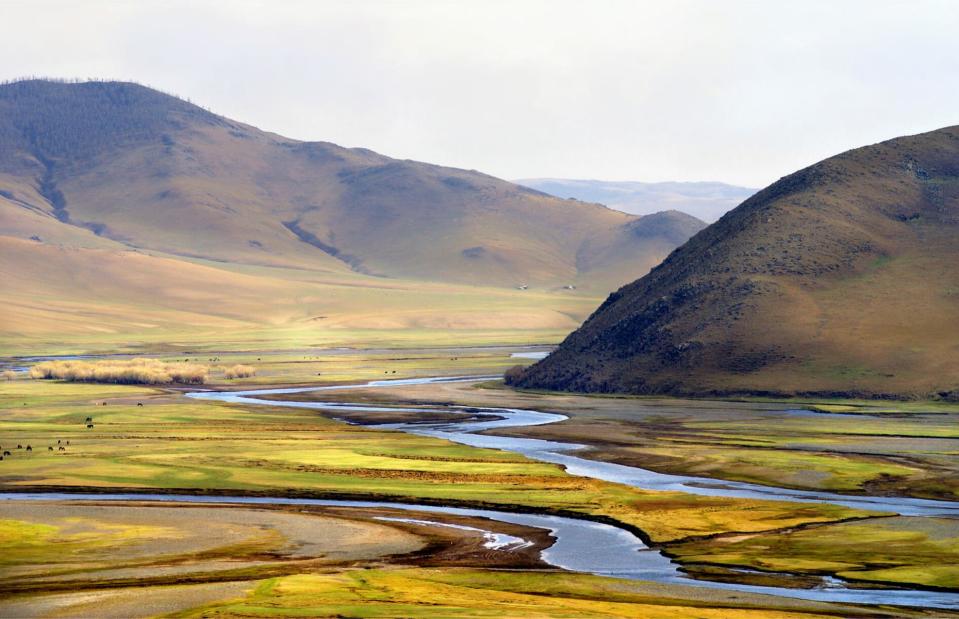
Chantal de Bruijne/Shutterstock
The fertile grasslands surrounding the Orkhon River were a sacred homeland of ancient steppe people and the valley later became the site of one of the most important cities in the history of the Silk Road, Karakorum. Genghis Khan founded the city just near the river in 1220 and it went on to become capital of the Mongol Empire under his son Ogedei. Today the picturesque and archaeologically rich Orkhon Valley is inscribed in the UNESCO World Heritage List and is still used as a summer pasture by herdsmen.
Weeki Wachee River, Florida, USA
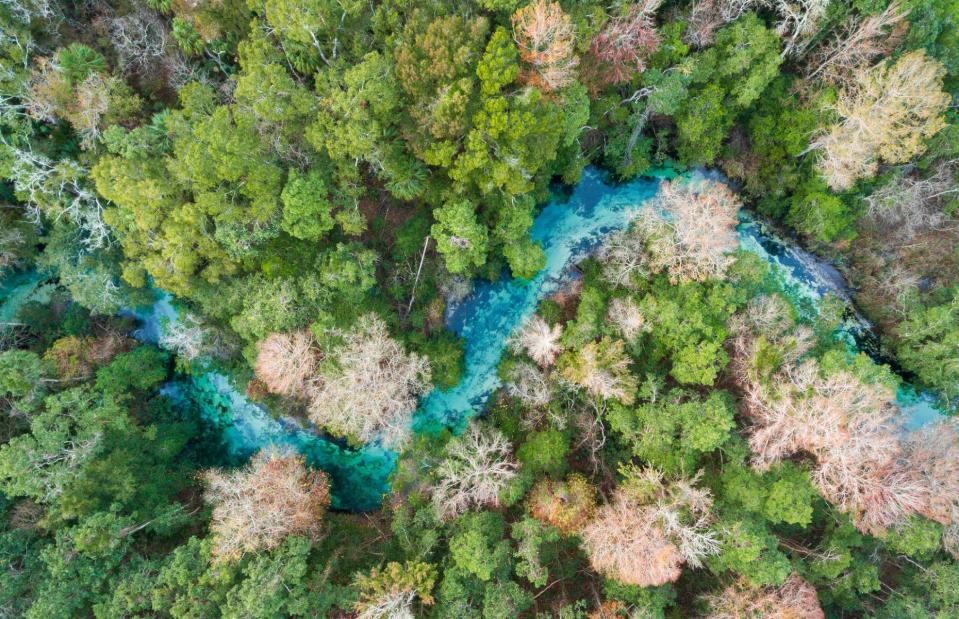
Sky Cinema/Shutterstock
One of America’s most stunning rivers, Florida’s Weeki Wachee is famous for its beautiful spring. The name Weeki Wachee means 'little spring' or 'winding river' in the language of the native Seminole Native American people. Weeki Wachee spring is one of the deepest naturally occurring springs in the USA at 150 feet (45.7m) wide and 250 feet (76.2m) long. The Weeki Wachee Springs state park was opened in 1947 and is best known for its underwater mermaid shows.

